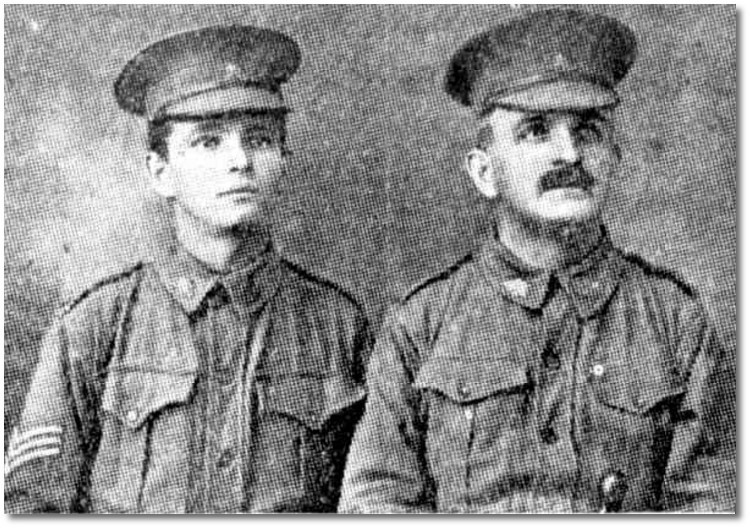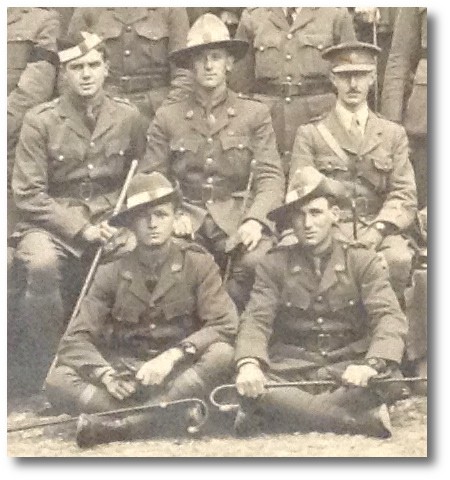Baxter men of Townsville
By Marg Powell, Specialist Library Technician, Metadata Services | 29 February 2016
There are so many chapters in the story of the Baxter family that it is hard to know where to begin.
Baxter brothers, Neil (1859-1908) and Duncan (1869-1917) came to Townsville from Scotland in 1903, before bringing out their families a year later. Together they ran the Baxter Furniture Warehouse until Neil’s death 1908, when Duncan became the proprietor.

Baxter's warehouse, Townsville, 1906. Image held Townsville City Council Library, accessed via TROVE, National Library of Australia
Corporal Neil Baxter (1894-1915), 15th Infantry Battalion had studied at Gatton Agricultural College, south of Brisbane, before enlisting to serve in the First World War, in November 1914. Neil’s battalion was destined to land at Anzac Cove, on the eve of the 24th April 1915, his body was never recovered.

Portrait of Corporal Neil Baxter, published in The Queenslander, 23 January 1915, p27
Annie and Duncan Baxter had received a letter from their son Neil, just days after being told of his death; the letter was published in the Townsville Daily Bulletin a few months later.
The staff at the Records struggled with the volume of correspondence from families who sought answers to often ‘unanswerable’ questions. This war was unlike previous wars, where often there was no body to be ‘found’ and in the first few days after the landing on Gallipoli, there was no roll call, or no one to call the roll.
Those in authority attempted to interview survivors, or company commanders to establish the last known whereabouts of ‘Missing’ soldiers. Left too long, those who survived often became casualties, or could no longer recall what happened to one of many, many men who had died alongside them in battle. It was not until April 1916, that they ‘officially’ declared Corporal Neil Baxter to have been Killed in Action.

Angus Baxter (1895-1957) and his father Duncan pictured in 1916, image published in The Telegraph (Brisbane), 10 June 1916, p13.
Duncan and his son Angus enlisted together in January 1916
Duncan Baxter, then 44 and his second son Angus 20, enlisted in the Townsville, although they did not depart for service overseas until June of that year.
Duncan Baxter and Angus arrived in France in November 1916, as part of the 42nd Infantry Battalion; Angus fell ill with mumps shortly after, but soon rejoined his unit and his father in the front lines, as Sergeant.
CQMS Duncan Baxter was severely wounded in both feet, during an action that occurred on St Patrick’s Day 1917. In letters received by his wife Annie, prior to and after his wounding, he described how he received the wounds, which cost him his life.
His son Angus had been with him in the same dugout, when they had been bombarded by high explosive shells. Duncan was evacuated to a clearing station, then hospital, but did not survive the severity of his wounds. Although Angus was unable to be with his father at the time of his death, he was able to attend his burial in Boulogne.
Duncan Baxter was described by his company commander, Major Heron, as a man that was
“an example of grit and determination, and willingness to do one's duty cheerfully.”

Group photograph of the men of No. 6 Platoon, No 2 Officer Training Battalion, Pembroke College, Cambridge in 1917. The photograph is mounted in a surround with the names of all the men printed below the image and on which members of the battalion have signed their names. In the front row is 2nd Lieutenant Angus Macdonald Baxter.
29520 No. 6 Platoon, No. 2 O.C. Battalion 1917, State Library of Queensland
Not long after his father's death Angus Baxter (1895-1957) attended Officer Cadet School, Pembroke College, Cambridge. The State Library of Queensland holds an autographed photograph of Angus and his fellow cadets, as they graduated in 1917.
Angus returned to active service in France and in early 1918 was seconded for duty with the 9th Infantry Training Battalion. He was then granted 4 months leave, on half pay, to return to Australia, during which time, the war ended.
Further reading ...
- Service record: BAXTER, Angus Macdonald
- Service record: BAXTER, Duncan
- Service record: BAXTER, Neil
- Australian War Memorial: Roll of Honour circular
- Soldiers Letters. Townsville Daily Bulletin 22 July 1915, p.4.
Comments
Your email address will not be published.
We welcome relevant, respectful comments.